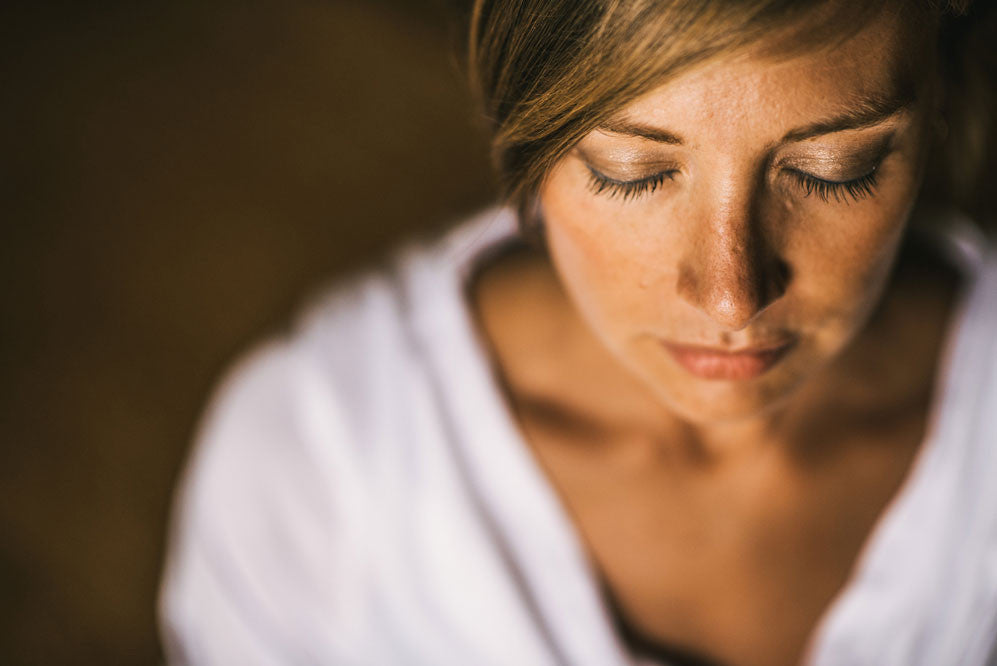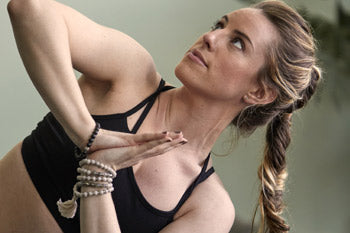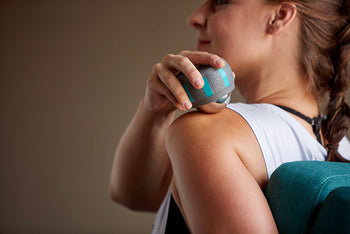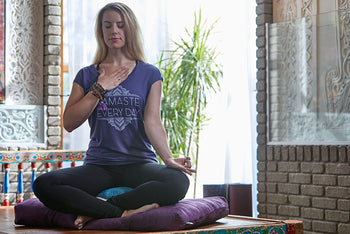How to Use Visualization to Heal Physically or Emotionally

Ten years ago, Jacquelyn Jones had a bad reaction to the medication she was taking for her back pain and was looking for an alternative way to heal. Though coping with a degenerative spine condition, she was not interested in risky invasive surgery or cortisone shots. Instead, she decided to try visualization to help her deal with the pain and change the way she thought about her condition.
“Within a month, I could see a shift in my attitude,” Jones says. “Instead of thinking of the pain as a problem, I started to think of it as an experience — the same way you might experience joy. I wasn’t afraid of it anymore.”
She eventually stopped taking her pain medications and has been practicing guided visualization for the past decade, both on her own and with a healing and meditation group called the Circle of Light.
“Someone with my condition would most likely have to resort to surgery to lead a normal life, but I’m a very functional and positive person, and it’s all due to my mental and spiritual state and how I react to my body,” she says.
What is visualization?
Visualization (also called guided imagery or creative visualization) is the technique of focusing your imagination on behaviors or events you’d like to have occur in your life. Advocates suggest creating a detailed schema of what one desires and then visualizing it over and over again, using all of your senses. What do you see? What do you feel? What do you hear? What does it smell like?
The practice is based on the idea that your body and mind are connected. By providing positive pictures, creative imagery and self-suggestion, visualization can change emotions that subsequently have a physical effect on the body, proponents say.
Psychologist and author Gay Hendricks, Ph.D., believes that visualization is one of the most powerful tools for change. “Many people are propelled by events of the past, but visualization is an act of projecting the present into the future,” says Hendricks. “Visualization changes the dynamics of personal change by pulling the person toward a visualized healthier future.”
Numerous studies have supported the benefits of visualization, usually in conjunction with other therapies, for treating a variety of conditions from asthma and anxiety to insomnia, and fibromyalgia.
How visualization can be used
You’ve probably heard the phrase, “The mind is a terrible thing to waste.” But it’s also a powerful tool to affect change.
Many people turn to visualization to help them move past obstacles (internal and external) in their lives, relax and relieve stress, resolve or cope with chronic pain, or heal themselves emotionally and physically, and accomplish goals such as losing weight or quitting smoking. Athletes use it to help them perform better, therapists use it to help patients heal from trauma, and experts conduct visualization seminars designed to help people realize their dreams.
Visualization can be done on your own or in a group with scripts, a guide, tapes or CDs. Jones says she started doing visualization on her own during the day whenever she could catch a quiet moment. She then joined the Circle of Light, a group of about a dozen women that meets biweekly, led and founded by Lynne Newman, a spiritual counselor and Reiki practitioner. Jones also uses guided tapes developed by Newman.
“It’s easier when someone else is guiding you through visualization,” Jones admits. “You’re relaxed and just listening to her voice.”
Nurse Esther Johnson, integrative therapies program manager at the Pathways Homehealth Hospice in Sunnyvale, Calif., uses visualization with her patients, often in conjunction with other therapies, for pain management, relaxation and help with anxiety.
Johnson recalls using guided visualization with a patient who was anxious about attending her son’s wedding. “I remember she said to me, ‘I had so many fears I wouldn’t be there, and now I’m sure I will be,’” Johnson says. “It gave her a deep sense of peace.”
What to expect when learning visualization techniques
Most visualization techniques begin with relaxation followed by summoning up a mental image. How much time it will take before you begin to see results depends on the severity of your ailment, the vividness of your imagery and your own determination.
Newman asks her clients to be open to the “possibilities of healing.” “I explain that there is no perfect way to do visualization and that their experience is uniquely their own,” she says. “I warn them that they might find there are little distractions, like an itch or their mind wandering. I ask that they simply be aware and then resume their quiet state.”
Hendricks describes visualization as “much like seeing an inner movie” and says that most of the time, it’s a pleasant, positive experience.
How to get started with visualization
There are numerous visualization and meditation CDs available that can help you with general visualization exercises and others that are geared for a variety of specific issues such as fertility, headaches, and depression. Ready to get started? Here are a few basic steps from Johnson:
- Start with gentle breathing.
- Focus on relaxing all your muscles (head to toe, toe to head, etc.).
- Sensory integration (i.e., using your five senses to integrate yourself into the visual imagery)
If you’re being guided by a person or a CD, there is usually a series of back and forth questions to further guide you into your imagery.
Also in Blog

Body Peace & Personal Empowerment

Yoga for Swimmers: Poses for Strength and Mobility







